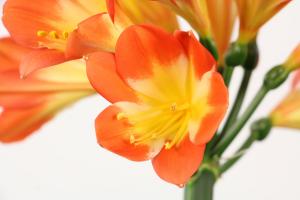Introduction
Gray water, also known as "greywater," is wastewater that is generated from household activities like laundry, dishwashing, and bathing. Instead of being discharged into a septic tank, gray water can be recycled and used for various purposes, such as irrigation. In this article, we explore how much gray water is used on plants each year.
The Benefits of Gray Water Irrigation
Gray water irrigation has become increasingly popular due to its numerous benefits. By using gray water for irrigation, households can reduce their water usage and save money on their utility bills. Additionally, gray water contains nutrients that are beneficial for plants.
How Much Gray Water Can Be Used for Irrigation?
The amount of gray water that can be used for irrigation depends on several factors, such as the type of plants being irrigated, soil type, and climate. According to research, an average household produces roughly 60-100 gallons of gray water per day. However, not all of this water can be used for irrigation.
Factors Affecting Gray Water Usage on Plants
The amount of gray water that can be used on plants each year can be affected by several factors. Firstly, the frequency and amount of rainfall in an area. In areas with high rainfall, gray water may not be necessary for irrigation. Additionally, the type of plants being irrigated plays a significant role in how much gray water can be used. For example, fruit trees require more water than plants like succulents. Similarly, the type of soil in an area also affects the amount of gray water that can be used for irrigation. Soil that is too sandy or lacks nutrients may not be able to absorb gray water effectively.
Calculating Gray Water Usage on Plants Each Year
Calculating how much gray water is used on plants each year involves several steps. Approximately 50-60% of indoor water usage can be reused for irrigation, while the remaining 40-50% is discharged into a septic tank. The amount of water used for irrigation can be calculated by multiplying the amount of gray water generated per day by the number of days in a year. If an average household generates 60 gallons of gray water per day, that amounts to 21,900 gallons of gray water per year. If half of this water is reused for irrigation, that amounts to approximately 10,950 gallons of gray water used on plants each year.
Conclusion
Gray water irrigation is an effective way of reducing water usage and saving money on utility bills. However, the amount of gray water that can be used for irrigation depends on several factors, such as rainfall, soil type, and plant type. By calculating the amount of gray water generated by an average household and how much can be used for irrigation, we can estimate how much gray water is used on plants each year.

 how many times do yo...
how many times do yo... how many planted tre...
how many planted tre... how many pine trees ...
how many pine trees ... how many pecan trees...
how many pecan trees... how many plants comp...
how many plants comp... how many plants can ...
how many plants can ... how many plants and ...
how many plants and ... how many pepper plan...
how many pepper plan...






























